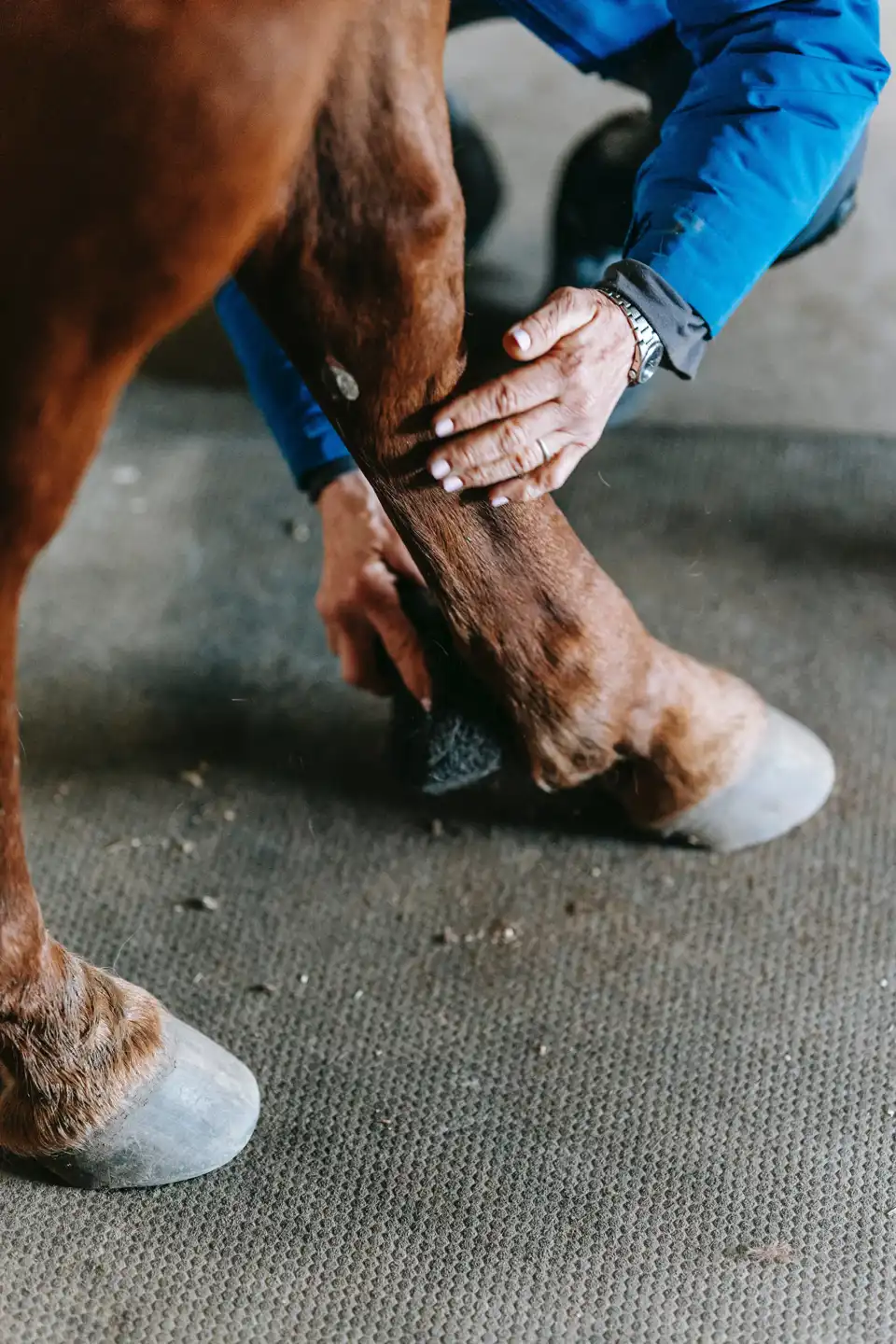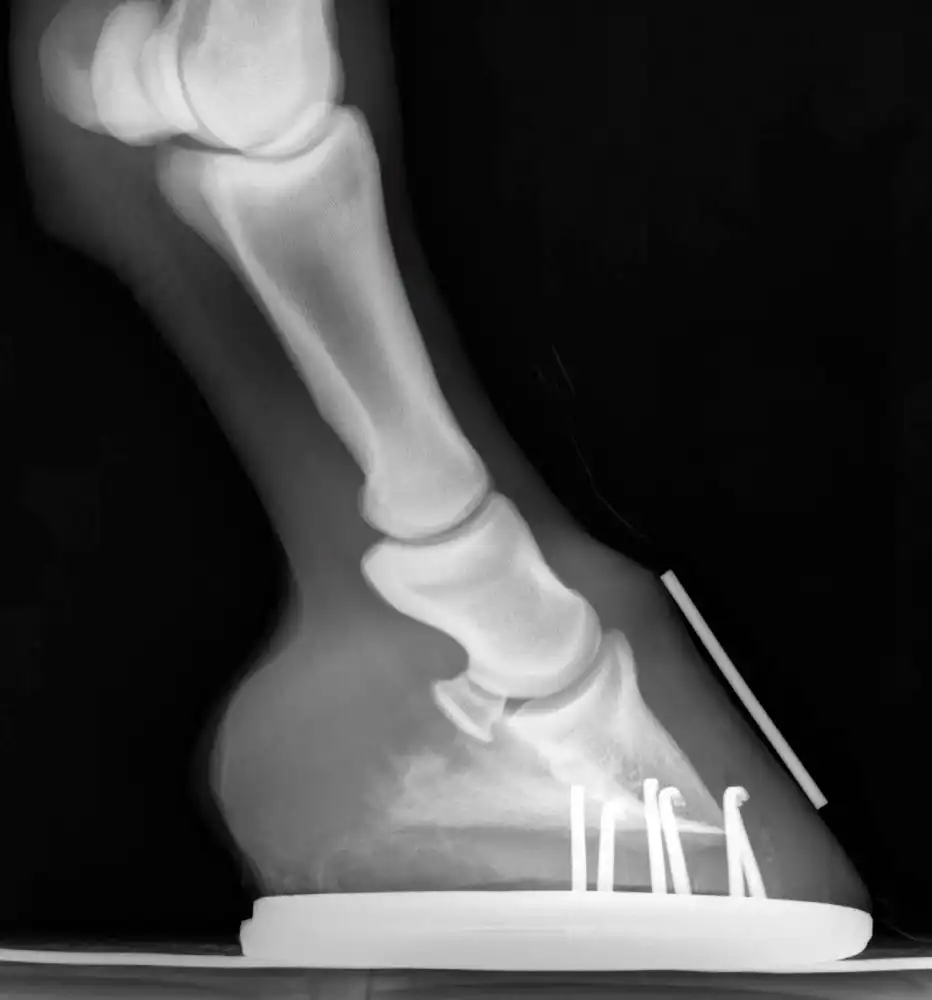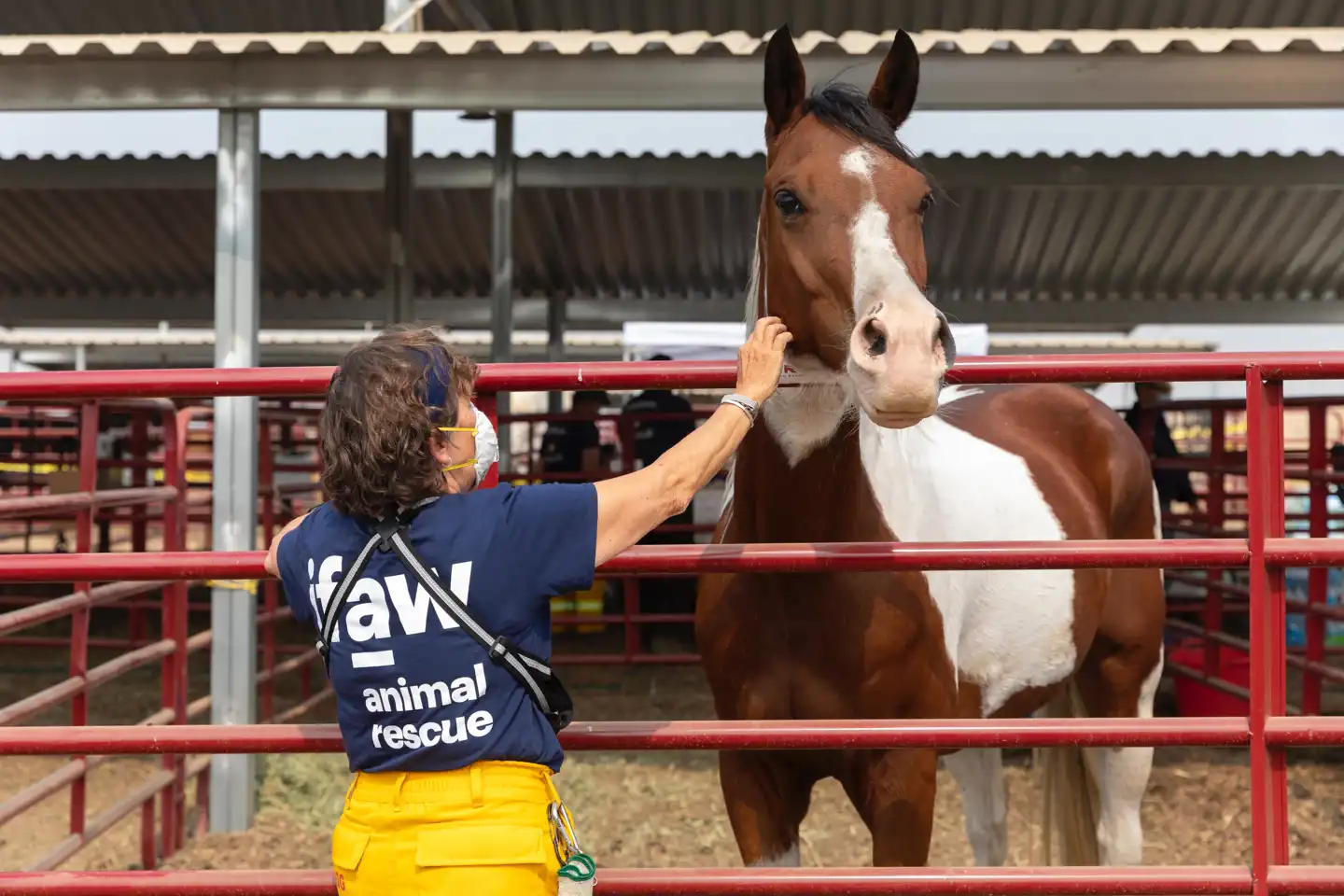Horse hoof health: Understanding, preventing and expertly treating hoof cracks
Occurrence and cause of hoof cracks
When the hoof wall splits, many riders are desperate.
Hoof cracks in the horn capsule can be more or less deep.
They run from top to bottom or vice versa.
The deeper the gap, the more serious the problem. If it tears through to the leather skin, blood can flow and the horse becomes lame. The depth of a chasm is sometimes difficult to recognize, even for an expert.
Hoof cracks are entry points for bacteria that can cause serious infections.
A common cause of the problem is a disturbed hoof balance, which causes the horn to tear. This depends on a complex interplay of various factors.
Most can be recognized by an expert who looks closely at the position of the horse's foot.
- Are the hooves symmetrical and are the angles correct in relation to the pastern position?
- The connection between the hoof bone and the horn capsule is also part of the hoof balance.
- X-rays can be used to look inside the hoof.
The first 3 steps of therapy for a hoof crack
- Analyse: X-ray images show how deep the fissure actually is.
- Repair: the crack is cut or milled out.
- Stabilize: the crack is immobilized.
The location of the defect often gives an indication as to why the hoof wall is splitting, i.e. whether it is a split in the wall at the toe, heel, or the bearing edge or coronary band. Experience shows that the origin and location of the gap are related to specific causes.
Hoof cracks in the heel area are in most cases a problem with heavily loaded hoof walls. And they are particularly sensitive. This is mainly due to the movements in the apparently stiff hoof. The coronary and heel area are designed to be much more mobile than the tip of the toe. This is necessary because the hoof mechanism that ensures blood circulation would otherwise not function. If these more mobile areas are under too much tension, they may crack.
The importance of hoof care
Primarily responsible are breeders who postpone the hoof care of their foals for far too long, thus causing problems with hoof positioning, and horse owners who do not adhere to correct regular hoof trimming intervals.
Hoof trimmers who do not know their trade and remove too much horn from the hoof can also cause lameness.
Sometimes the horseshoe gets in the way. They are often placed slightly back on the front hooves to make rolling easier. If the farrier does not work properly here, the horseshoe will rest on the sole of the hoof instead of on the bearing edge. The hoof mechanism can no longer function normally: the sole cannot bend under the load because that is where the shoe is located; this also affects the movement in the crown margin.
Cracks in the bearing edge are more common in unshod horses with hooves that are too long. The horse owner must ensure that hoof care appointments are not postponed. The more sloping walls are particularly affected.
A common reason for hoof cracks in the toe or sidewalls is heels that are too long. Some farriers tend to leave the heels too long. Fortunately, the damage is usually repaired quickly; Sidewall cracks often stabilize by simply improving hoof position.
The pressure towards the toe causes the bearing edge to bulge outwards, and at the end of this bulge in the last third of the hoof sidewall an opening is created. With asymmetrical hooves, the less stressed side wall of the hoof is pushed outwards - tension is created. Hooves that are too wide are also sensitive, causing the hoof walls around the hoof to move outward.
Caring for the horse's hoof with a good ointment like Hoof Booster is intended to keep the horn supple. The rider (owner) must pay attention to the hoof.
Environmental influences
Injuries can put too much strain on the hoof. For example, if the horse accidentally strikes the coronary band or the hoof hits a hard edge. Landing on a rock can also cause a hoof crack. This especially happens in the summer when the hooves are very hard.
The weather can also cause hoof cracks, which only affect the outer glaze layer. It is normal for this to tear - and there is no cause for concern. This happens when the hooves get wet in the morning, the horn swells and the water evaporates very quickly due to wind or sun. This is because the swellable hoof is designed to absorb water slowly and release it slowly. Wind cracks do not need to be treated. However, to keep the horn supple, you can care for it with oil or balm.
The treatment of hoof cracks
The deeper the gap, the deeper the therapy must be. A little cross-grating at the end of the crack is not enough. The pressure must be released and this is only possible if the horn wall is completely cut.
Hoof repair for deep hoof cracks requires tough measures.
Good veterinarians use a clear schedule.
After the X-ray, the opening is repaired, i.e. milled or cut out deep enough so that the laminae becomes visible, to know that an infection has not developed somewhere in the hole that needs to be treated with antibiotics.
The vet also examines the horse's blood to see whether important trace elements are missing. For example, zinc deficiency has a bad effect on the quality of the horn – brittle horn is more likely to crack.
The farrier takes the next step to prevent the hooves from tearing further after the first treatment so that the opening can then grow properly closed. Various techniques are used for this, such as clamps with screws, plastic plasters with Dallmer sand crack patches and there are even techniques that use wire.
It is important that the tension that could have led to the hoof crack is removed and that the hoof can grow smoothly and properly again.
Technology helps the farrier
The modern farrier sometimes uses modern technology. High-speed images give us important details about the stress on the hoof during movement that cannot be seen with the naked eye.
The horse and its owner need a lot of patience because the opening only closes as quickly as new horn is produced, i.e. about six to nine millimetres per month. Especially if there are cracks in the coronary band and in the heel area, the horse is often not allowed to be ridden for several months and is not allowed to move freely. Otherwise the gap has little chance of closing from top to bottom.
Some hoof cracks never grow and the horses still walk without major problems. A coronary abnormality is then assumed to be the result of an injury.
A crack can become a fracture. Some cracks do not run lengthwise through the hoof as cracks, but rather transversely, that is, perpendicular to the horn tubes. The risk of them tearing further is therefore low. Usually they just grow out of it. The main causes are injuries to the coronary band or hoof ulcers. In individual cases there may also be a hollow wall (caused by White Line Disease) behind it.
Good hoof care is the best protection against risky hoof cracks.
How good a horse's hooves are depends on many factors. In addition to food and care, genes also play a role. The horn of the horse's hoof protects internal structures, absorbs shock, transmits force and must be able to withstand high pressure without quickly wearing out. Good horn is hard, very resilient and extremely resistant to cracking. Soft hooves break out and split more quickly.
Many different factors – internal and external – influence the quality of the horn. This includes shoeing, age, movement, diseases and the horse's posture. If the hooves stand in a mixture of faeces and urine all day, the horn disintegrates and its tensile strength decreases. The humidity of the horn also affects the quality. If it is too high, the tensile strength decreases. If the moisture content is too low, it becomes brittle.
The role of feed and genes in hoof cracking
The horse's diet plays a major role. In nutritional tests with additions of biotin, zinc, copper, iodine, methionine or tyrosine, researchers discovered that the horn changed positively. Birk Super Feet is the very best supplement to maintain good quality of the hooves.
Heredity and breed also play a role. Scientists discovered that thoroughbreds have significantly harder hooves than cold-blooded horses. Studies on Lipizzaner horses have shown that good or bad hooves are determined genetically, that is, inherited.




